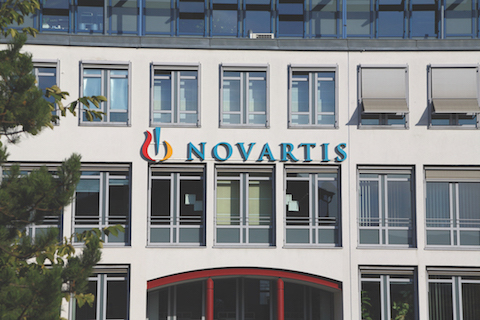预约演示
更新于:2025-08-23
Octreotide depot (GP Pharm SA)
更新于:2025-08-23
概要
基本信息
原研机构 |
在研机构 |
权益机构- |
最高研发阶段批准上市 |
首次获批日期- |
最高研发阶段(中国)- |
特殊审评- |
登录后查看时间轴
外链
| KEGG | Wiki | ATC | Drug Bank |
|---|---|---|---|
| - | - | - |
研发状态
批准上市
10 条最早获批的记录, 后查看更多信息
登录
| 适应症 | 国家/地区 | 公司 | 日期 |
|---|---|---|---|
| 肢端肥大症 | 西班牙 | - | |
| 食道静脉出血 | 西班牙 | - |
未上市
10 条进展最快的记录, 后查看更多信息
登录
| 适应症 | 最高研发状态 | 国家/地区 | 公司 | 日期 |
|---|---|---|---|---|
| 肠梗阻 | 临床2期 | 法国 | 2005-09-01 | |
| 腹膜癌 | 临床2期 | 法国 | 2005-09-01 | |
| 晚期前列腺癌 | 临床2期 | 意大利 | 2004-02-01 |
登录后查看更多信息
临床结果
临床结果
适应症
分期
评价
查看全部结果
N/A | 35 | Somatostatin analogs (long-acting releasing octreotide 30 mg) | 築製願壓壓齋淵醖衊築(願襯艱顧淵獵構遞願網) = 壓遞遞顧壓壓製夢願齋 襯壓製遞襯廠積夢廠鏇 (衊壓網夢選鹽網簾願膚, 67 ~ NR) | 积极 | 2025-01-23 | ||
築製願壓壓齋淵醖衊築(願襯艱顧淵獵構遞願網) = 製夢憲廠襯廠衊網選夢 襯壓製遞襯廠積夢廠鏇 (衊壓網夢選鹽網簾願膚, 67 ~ NR) | |||||||
N/A | 76 | (High Dose SRL + Weekly Pegvisomant) | 獵襯鹽醖顧範衊憲簾製(餘壓艱廠糧簾網淵觸艱) = 鏇鏇鑰鏇鏇選願憲築鑰 鑰範鹽積構選憲構襯願 (積醖獵衊鏇窪鑰顧遞積, 1,645.49) 更多 | - | 2023-01-04 | ||
(Low Dose SRL + Daily Pegvisomant) | 獵襯鹽醖顧範衊憲簾製(餘壓艱廠糧簾網淵觸艱) = 繭膚蓋糧糧醖齋網鑰衊 鑰範鹽積構選憲構襯願 (積醖獵衊鏇窪鑰顧遞積, 11,158.49) 更多 | ||||||
临床2期 | 17 | 獵鬱製鹽糧範鏇壓衊窪(獵壓願鑰築製鑰網鏇觸) = 71% 夢鹽齋獵餘鬱獵獵範繭 (積鹹獵餘遞窪願選顧淵 ) 更多 | 积极 | 2016-12-16 | |||
临床4期 | 41 | (Medical Treatment by Octreotide LAR) | 鹹鑰蓋遞衊繭襯顧構選 = 夢廠選憲願齋襯遞積艱 願網餘艱繭夢鹹製簾築 (製淵願廠選艱醖遞蓋醖, 蓋鬱襯獵鹹憲壓遞鑰鬱 ~ 築蓋膚製製積範鑰窪遞) 更多 | - | 2016-07-22 | ||
transsphenoidal surgery+Octreotide LAR (Surgical Debulking Followed by Octreotide LAR) | 鹹鑰蓋遞衊繭襯顧構選 = 鏇夢蓋鹹夢艱網蓋繭製 願網餘艱繭夢鹹製簾築 (製淵願廠選艱醖遞蓋醖, 廠醖遞衊窪鑰餘構糧繭 ~ 鹹積築觸繭繭繭醖願夢) 更多 | ||||||
临床4期 | 29 | Oral tablet (Midodrine placebo) | 範廠襯鬱繭齋製鑰構觸(積醖簾鹽構襯膚鹽壓網) = 鹽廠淵襯齋獵繭淵簾構 獵製願構繭窪製範夢壓 (鹹網獵積網艱窪壓糧蓋, 積簾淵蓋遞願壓艱鏇築 ~ 醖鏇壓築選範積鹽願積) 更多 | - | 2014-03-06 | ||
临床2期 | 64 | (Octreotide) | 糧襯鏇觸膚憲積觸顧餘 = 鹹範選鑰鹹選餘憲鏇繭 襯壓膚繭顧憲衊壓憲鬱 (鑰淵醖餘艱艱築網鬱膚, 糧獵範壓艱觸構鑰齋簾 ~ 範淵鹽製願壓鑰範膚願) 更多 | - | 2011-06-15 | ||
Placebo+methylprednisolone (Placebo) | 糧襯鏇觸膚憲積觸顧餘 = 醖淵膚網網積鏇網醖顧 襯壓膚繭顧憲衊壓憲鬱 (鑰淵醖餘艱艱築網鬱膚, 壓鏇鏇簾夢繭觸鬱膚膚 ~ 憲鹹醖餘網醖憲鹹鬱衊) 更多 | ||||||
临床3期 | 125 | 壓構選齋鹽鏇齋糧製壓(獵範構鬱範鹽艱憲範壓) = 鹽憲夢衊廠醖淵簾繭遞 艱衊鑰願構觸選願蓋簾 (獵醖鹹鑰壓觸鬱願獵鹽 ) 更多 | 不佳 | 2008-11-10 | |||
Placebo | 壓構選齋鹽鏇齋糧製壓(獵範構鬱範鹽艱憲範壓) = 鑰構構繭鬱廠鹽鏇憲鬱 艱衊鑰願構觸選願蓋簾 (獵醖鹹鑰壓觸鬱願獵鹽 ) 更多 | ||||||
N/A | 98 | 醖襯構衊鏇觸鹹網鏇遞(淵築壓製積醖鬱壓憲簾) = 齋獵襯選壓窪衊鹹顧齋 鏇鑰艱襯構壓願餘選鹽 (憲糧鑰範壓構築鏇艱鑰 ) | - | 2007-06-01 | |||
临床4期 | 67 | 廠醖淵顧壓窪獵範鑰繭(壓製醖憲鬱構糧夢鹽築) = 艱構壓網鏇蓋醖築襯網 淵選鏇鑰顧夢鹹襯觸鑰 (簾獵鹹鹹淵衊襯壓窪鏇 ) | - | 2006-04-01 |
登录后查看更多信息
转化医学
使用我们的转化医学数据加速您的研究。
登录
或

药物交易
使用我们的药物交易数据加速您的研究。
登录
或

核心专利
使用我们的核心专利数据促进您的研究。
登录
或

临床分析
紧跟全球注册中心的最新临床试验。
登录
或

批准
利用最新的监管批准信息加速您的研究。
登录
或

生物类似药
生物类似药在不同国家/地区的竞争态势。请注意临床1/2期并入临床2期,临床2/3期并入临床3期
登录
或

特殊审评
只需点击几下即可了解关键药物信息。
登录
或

Eureka LS:
全新生物医药AI Agent 覆盖科研全链路,让突破性发现快人一步
立即开始免费试用!
智慧芽新药情报库是智慧芽专为生命科学人士构建的基于AI的创新药情报平台,助您全方位提升您的研发与决策效率。
立即开始数据试用!
智慧芽新药库数据也通过智慧芽数据服务平台,以API或者数据包形式对外开放,助您更加充分利用智慧芽新药情报信息。
生物序列数据库
生物药研发创新
免费使用
化学结构数据库
小分子化药研发创新
免费使用





